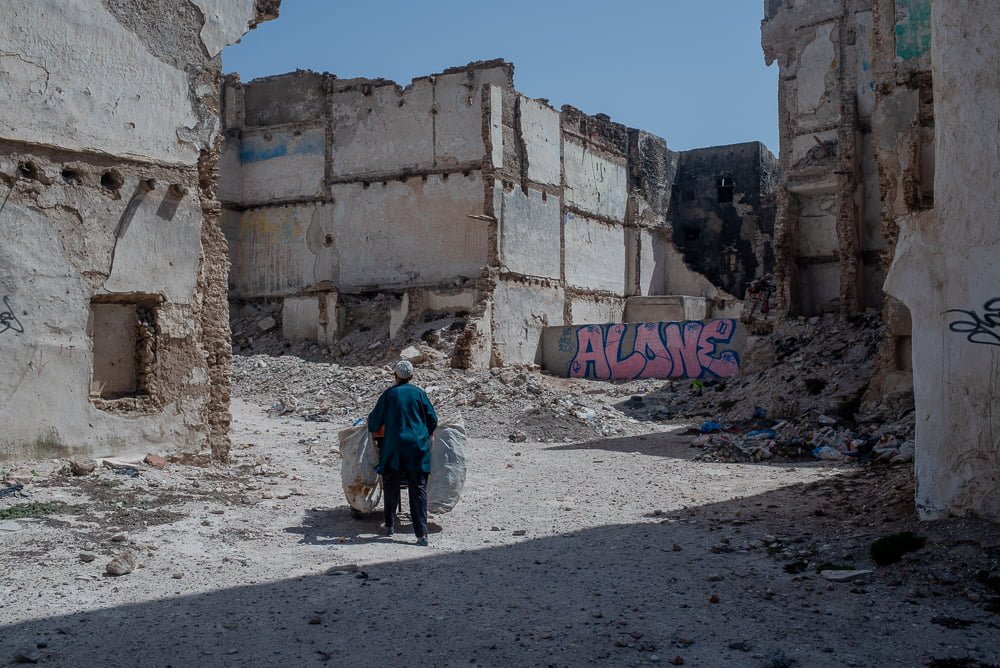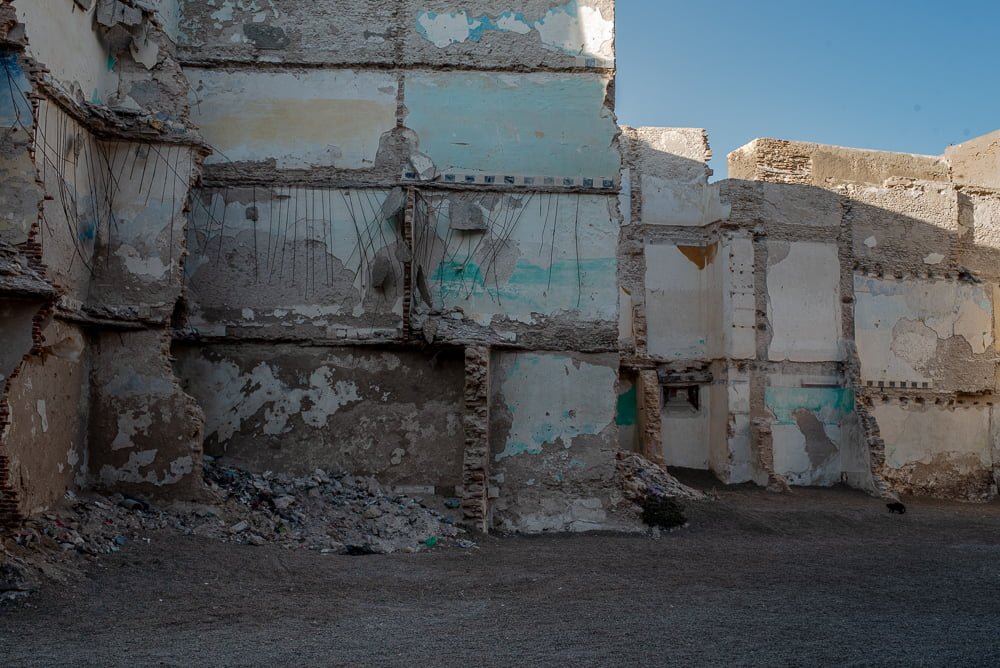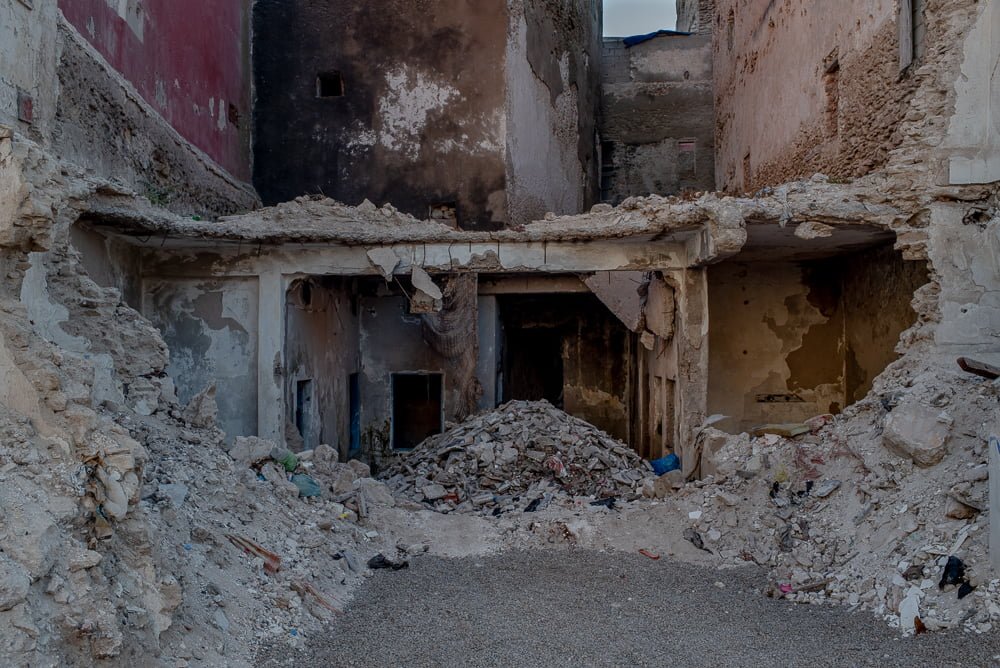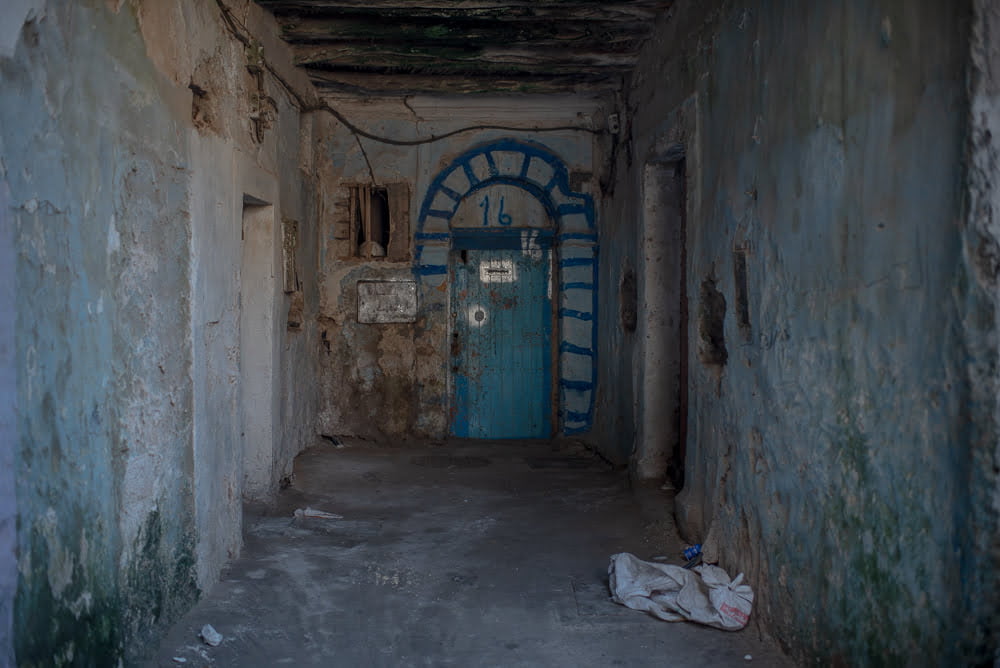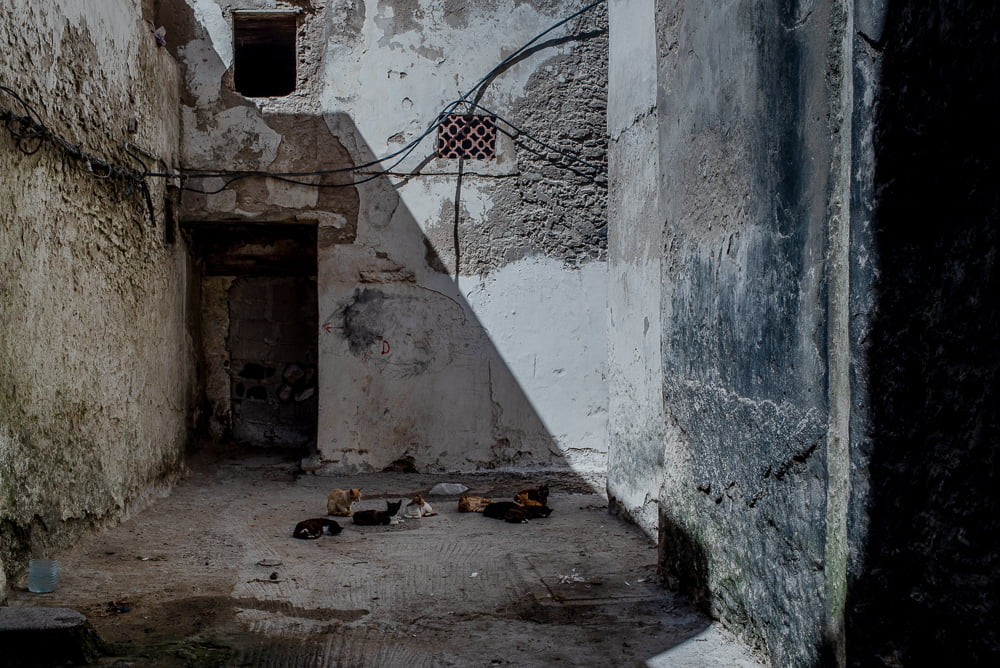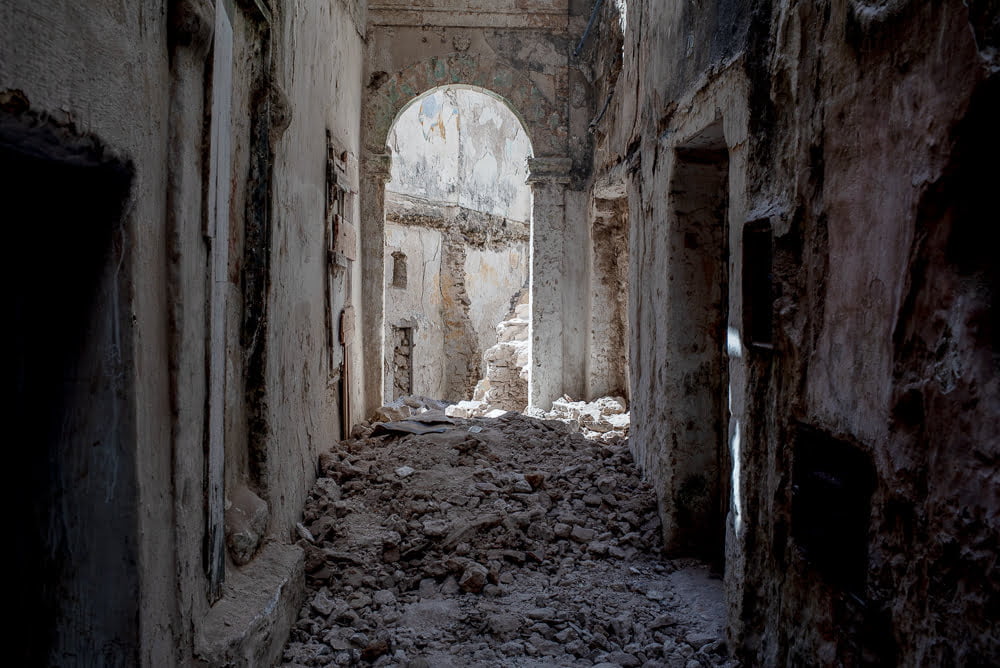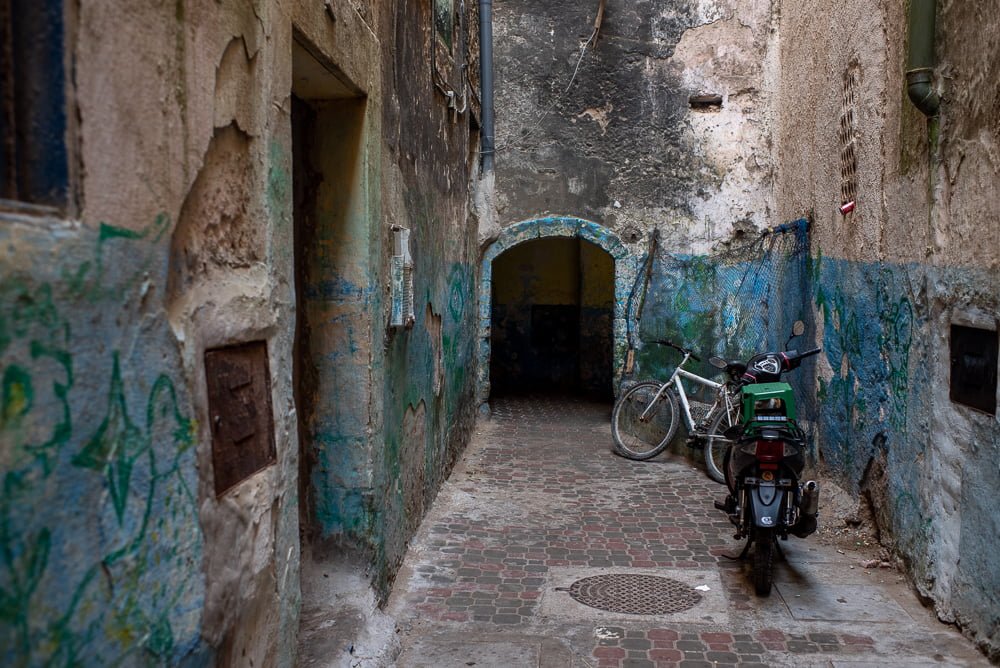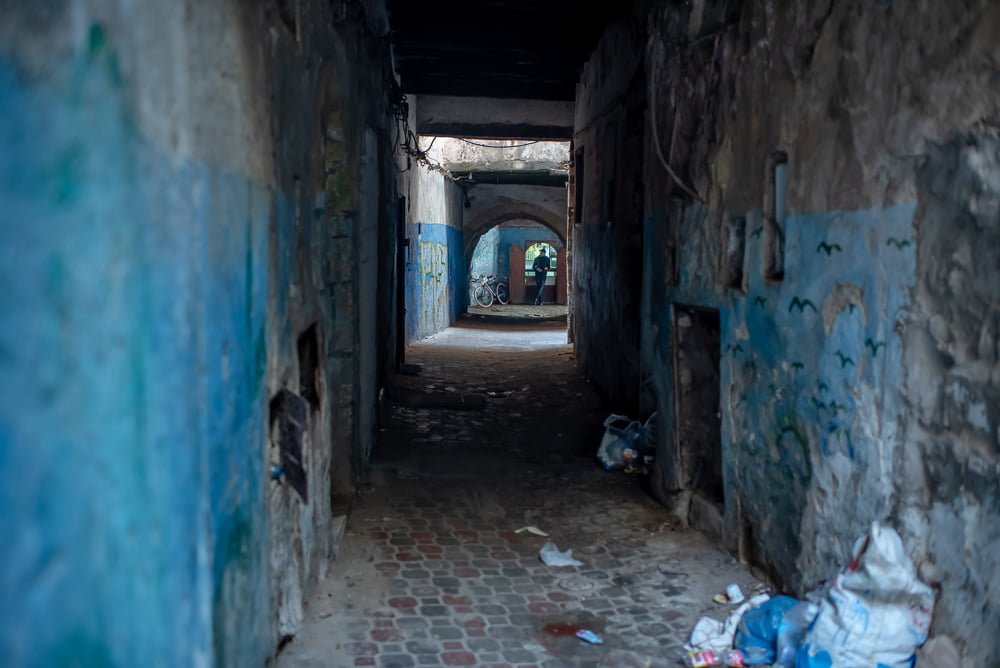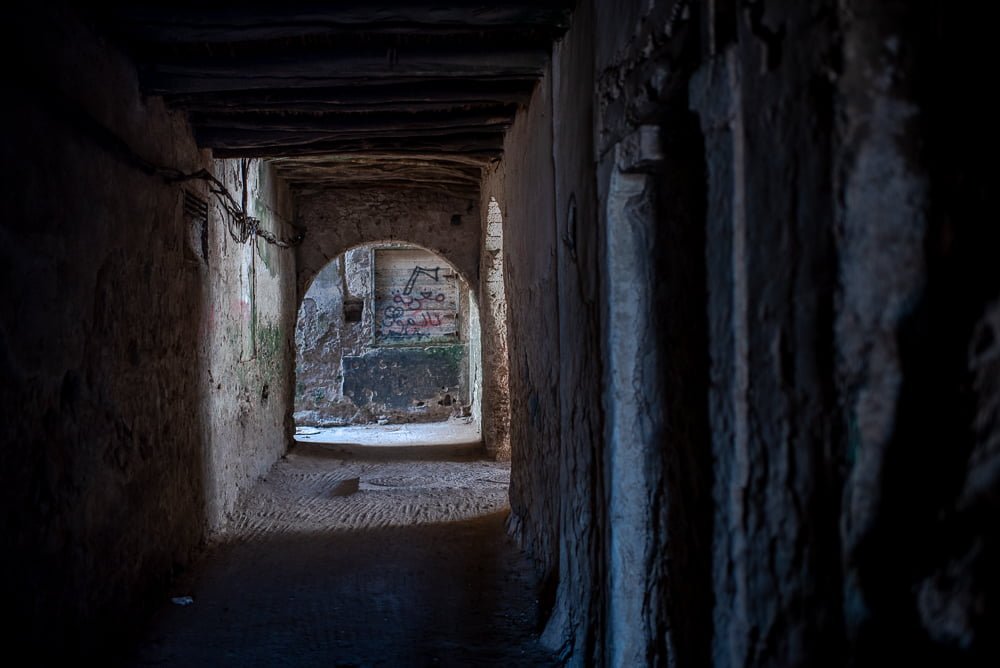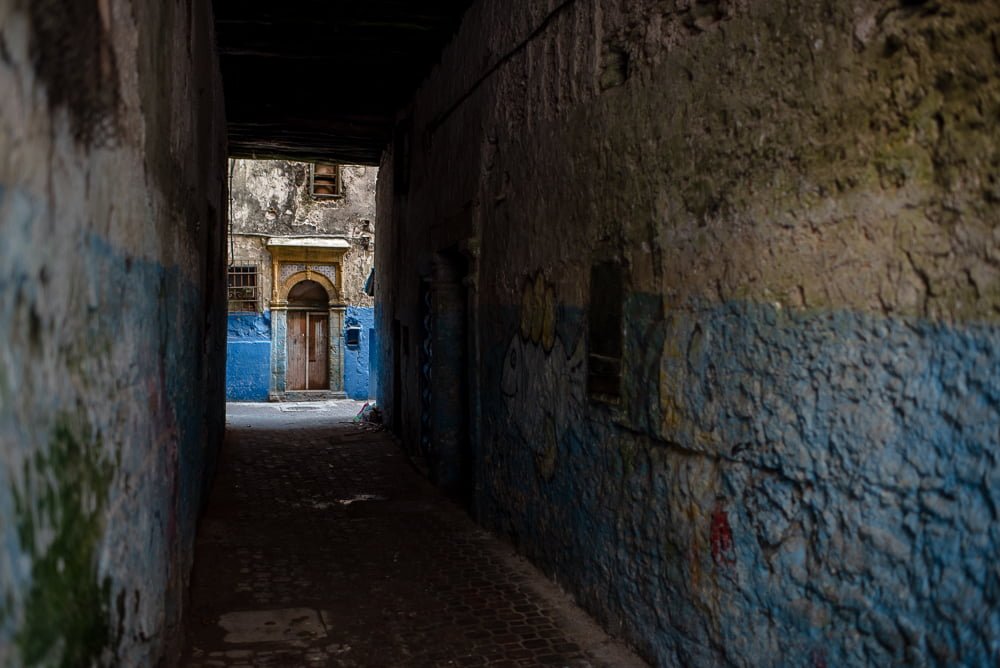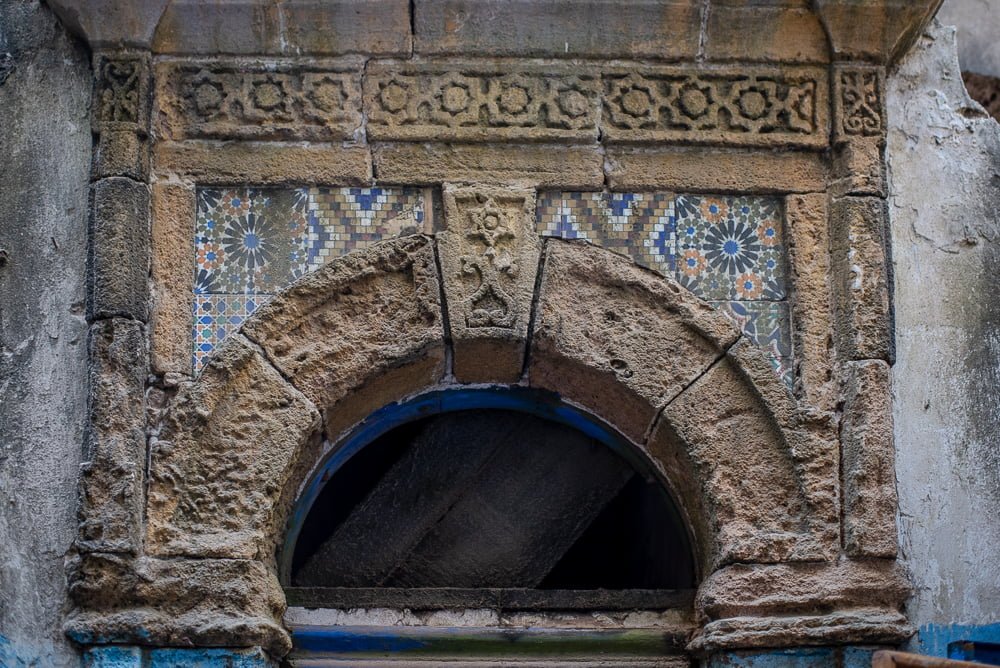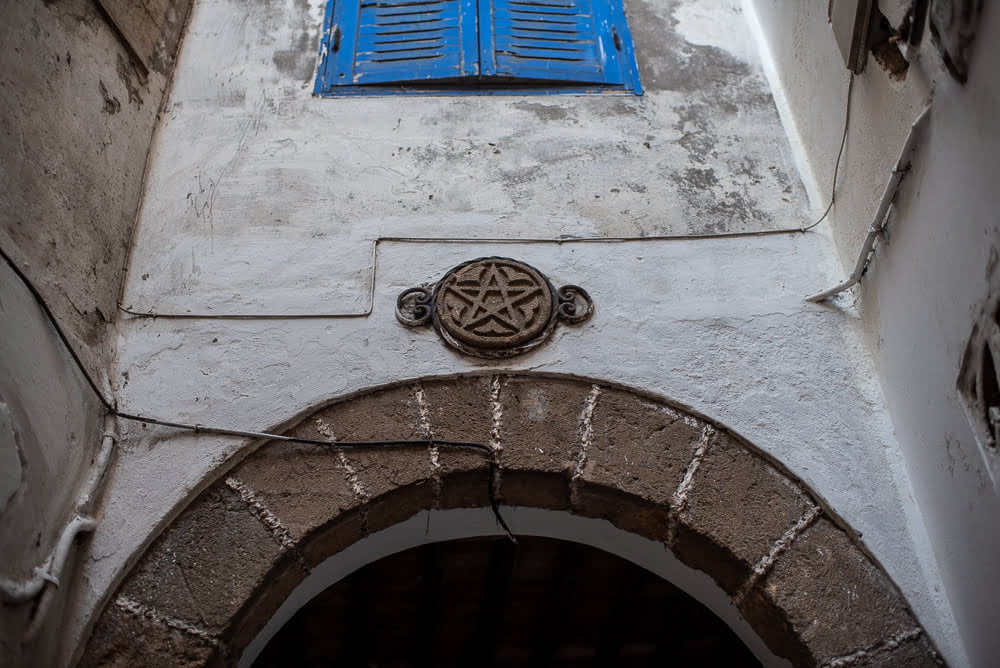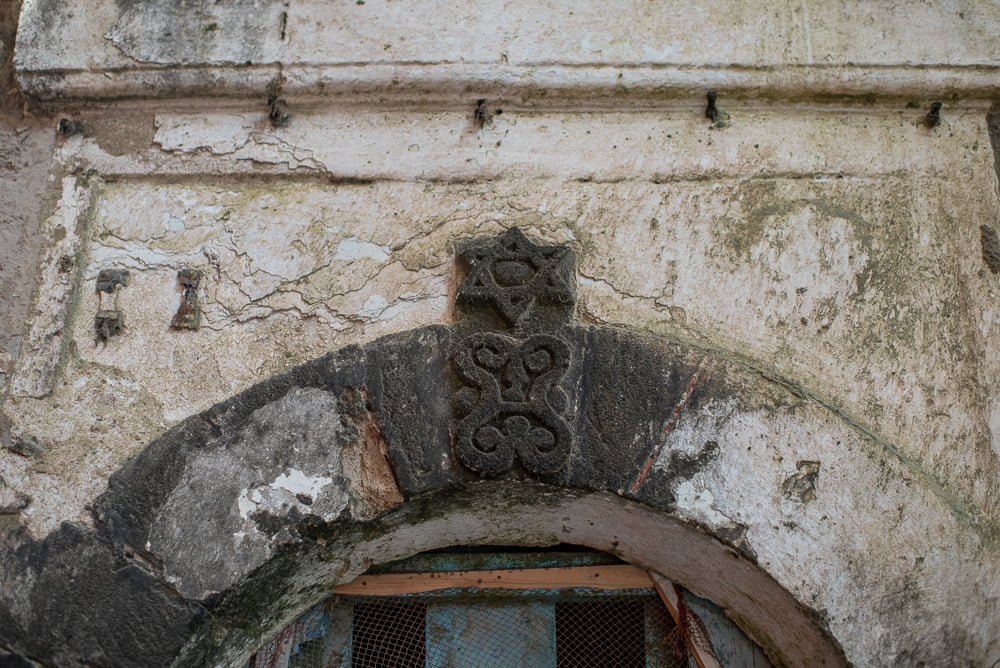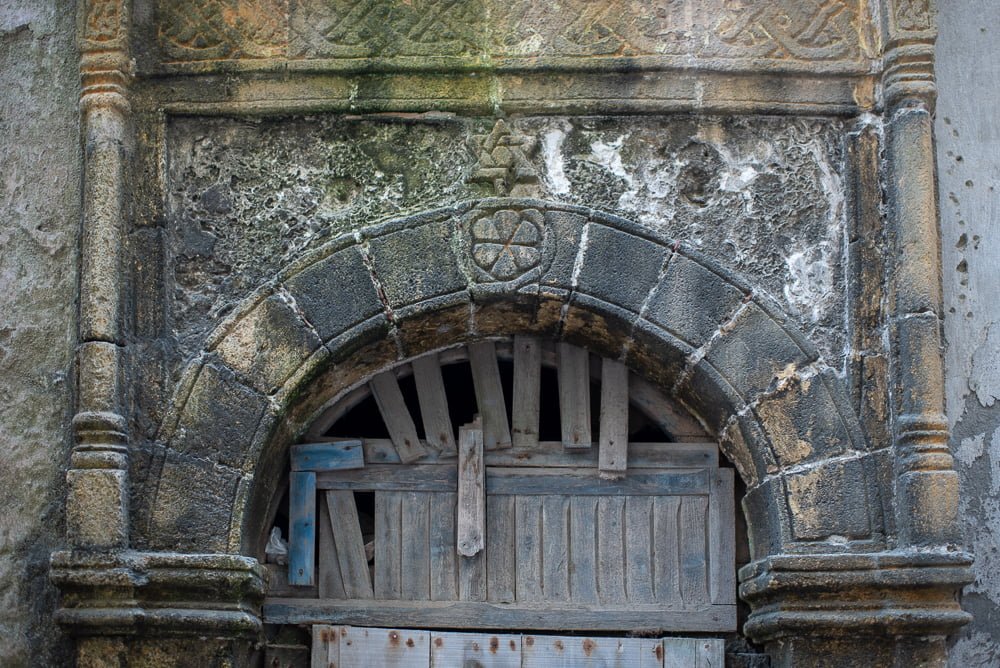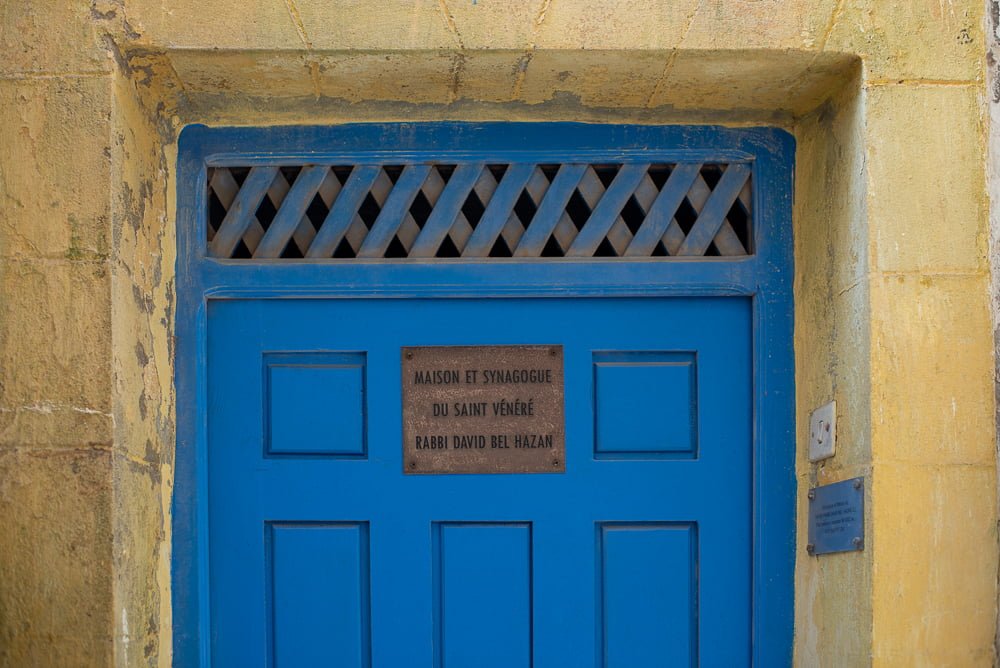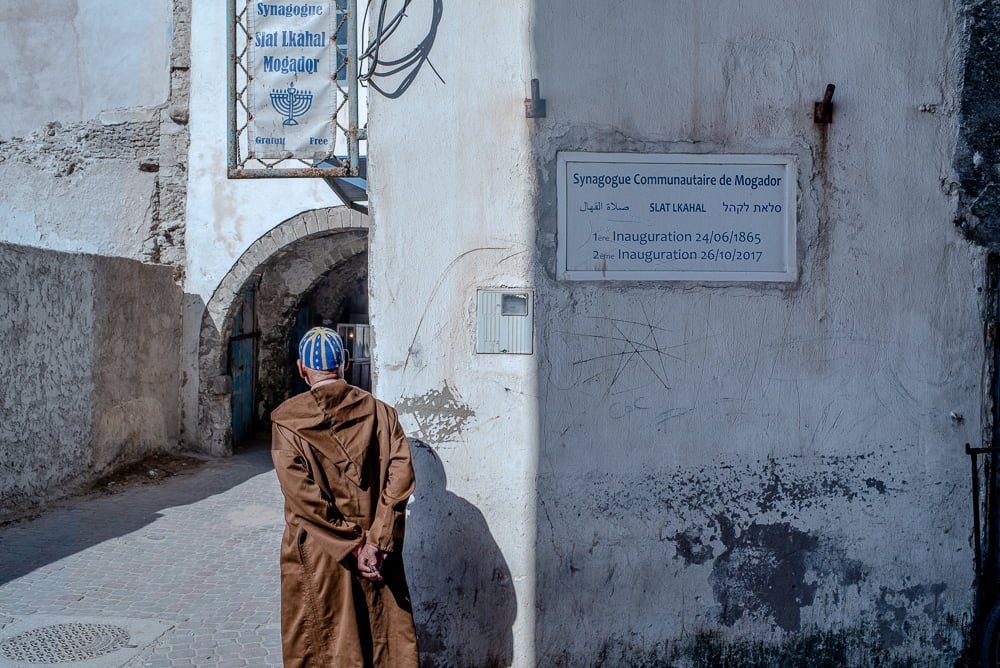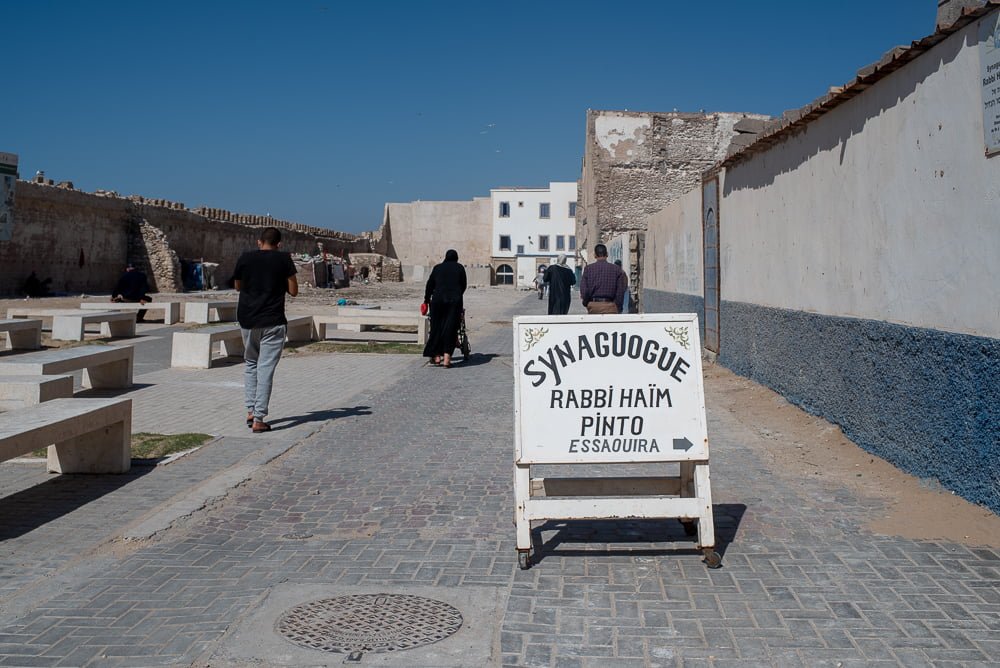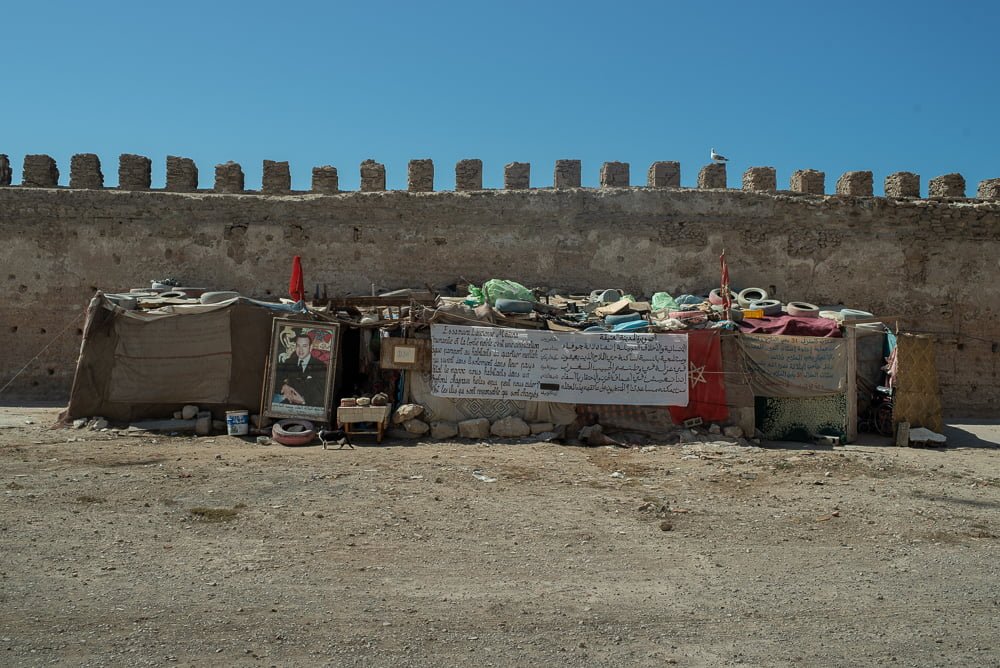Much of the available online literature provides a positive description of Jewish/Arabic settlement in Morocco, suggesting a substantial legacy of intra-racial tolerance, accord and cultural harmony. Indeed, Morocco seems to be advertising this positive relationship in its marketing and promotional campaigns to attract tourists from Arab, Christian and Jewish diasporas. The specific qualities that a Jewish workforce brought to Morocco ( including banking, usery, jewel-making and contacts with the West ) were considered invaluable to Morocco’s economic expansion and world trade by former sultans.
But is this portrayal true? What really was the relationship between the originally settled Jewish communities across the Mahgreb and Arab invaders? What agreements and covenants were agreed and signed to facilitate peace and ordered co-habitiation? What socio/economic/political factors influenced that relationship and the lifestyle of Jews under Arab rule? Does a better understanding of the experiences of Jews living in Arab controlled countries and under Arab dominion for almost a thousand years contribute to a broader understanding of the Arabic-Jewish debate?
This is not a comprehensive study, just a collection of quotes from a number of sources I have found from a mere 2 days of research online. Some quotes provide a sanitised modern perspective of harmony whereas other carry more gravitas and their sources are fascinating and well worth looking up independently. I have taken mostly from a book titled ‘Jews in Arab Countries: The Great Uprooting’ by French author Georges Bensoussan. Published in December 2018 it ‘retells the story of what life was like for Jews in the Arab world since 1850. During the early years of this time, it was widely believed that Jewish life in Arab lands was peaceful. Jews were protected by law and suffered much less violence, persecution, and inequality. Bensoussan takes on this myth and looks back over the history of Jewish-Arab relations in Arab countries’.
I have only skimmed a small part of the forensic narrative and taken selectively but enough to provide evidence that it was not an easy time. The original agreement, called the Pact of Ohmar, signed between the Arabs and Jews following the Muslim victory was the template for the next millenia. The link provided below is for an annotated version on Google books where cutting and pasting will not work. All the quotes have been re-typed so excuse any typos that may exist. Also I am aware of copywrite – I make no money on this website, do it out of a sense of wanting to share experiences with others, feel I am advertising Mr Bensoussan’s book and will remove the quotes should he discover this page and request removal.
As a further gesture of goodwill here is a link to his book on Amazon should anybody wish to explore further or even make a purchase.
The photographs below portray the Jewish Mellah in Essaouira as existed in June 2019. I have focussed on the ruins of the houses nearest the sea wall, the crumbling, dark and some say dangerous alleys and the remaining visible signs of Jewry in the locality. These include the star of David above some doors, a horseshoe above a door to protect from evil and evidence of an abandoned and several reconstructed synagogues. I will include photographs of the insides of synagogues in another post.
The post finishes, perhaps incongruously, with a photograph of a temporary dwelling housing non-Jewish occupants in the Jewish Mellah, pressed right up against the sea wall where the salt spray from storms caused so much damage to the original houses just opposite. Themes of social isolation, discrimination, poverty and inadequate housing continue even today; a UNESCO Report 11 years ago identified a pressing need to rebuild this derelict area. Residents of Essaouira and its Mellah are still waiting.
“The crumbling Jewish Quarter in the port town of Essaouira is a symbol of the plurality of Moroccan culture. Essaouira was established in the mid-eighteenth century by Alaouite Sultan Sidi Mohamed ben Abdellah on the site of a sixteenth-century Portuguese fortress. It quickly became a major trading post between Africa and Europe. During that period, the Jewish Quarter, called Mellah, was established to extend the sultan’s protection to the Jewish inhabitants. Making up 40 percent of the city’s population, the thriving and productive Jewish community was deeply integrated into Moroccan society, and the Mellah played an important role in Essaouira’s economic development.”
2018 World Monuments Watch post here.
“Essaouira has long been a symbol of tolerance, with Jews and Muslims coexisting in peaceful community. During the French Protectorate, Essaouira ceased being a major trading post, forcing many families to migrate to bigger cities. After the founding of Israel, the Mellah lost around 98 percent of its population, and after 1980s, the Jewish community abandoned the area after centuries of occupation. A hybrid of Moorish and Art Deco architecture including residential buildings—many with the Star of David carved into the façade—more than a dozen synagogues, a Talmud school, and other buildings are the only physical evidence of centuries of Jewish presence in Essaouira. Some structures remain abandoned, crumbling or demolished due to safety concerns, while others have been converted into boutique shops and hotels, with little regard to the history of the area and the architecture. Rehabilitation and redevelopment takes place in a piecemeal fashion, addressing individual buildings and not the area as a whole, and often incorporating modern materials. The history of the Mellah as a haven for religious plurality is being lost and forgotten”
2018 World Monuments Watch post here.
“The Jewish Quarter has become a pilgrimage site for many former residents and descendants of Moroccan Jews, who visit the city in increasing numbers each year. Part of the 2001 World Heritage inscription of the Medina of Essaouira (formerly Mogador), the Mellah is also the focus of a local initiative to revitalize the city as a major tourism destination.
There is an urgency to document and tell the story of Essaouira’s Jewish Quarter and the role it played in the city’s cultural and religious plurality before it is forgotten. The 2018 World Monuments Watch calls for the documentation and interpretation of the Jewish Quarter of Essaouira as a symbol of the peaceful coexistence between religions to contribute to intercultural and interreligious dialogue to fight intolerance.”
2018 World Monuments Watch post here.
“In March 2019, Watch Day was held in Essaouira, welcoming children from a local youth center for two-day festivities which included a guided tour through the Mellah, focusing on the plurality and Jewish heritage of the site. The tour was followed by an art workshop, where the children built the models of the Jewish Quarter from cardboard. Watch Day concluded with a photo workshop, utilizing the colorful and historic buildings within the quarter as the backdrop”
.2018 World Monuments Watch post here.
“The Sultan also settled a large number of Jewish merchant families (the tujjâr al-sultân , or “sultan’s traders”) in Essaouira in order to take better advantage of their business connections with Jewish merchants in European cities such as Livorno, Liverpool, and Amsterdam. By the late 18th and early 19th centuries 40% of the city’s population was Jewish. When the city’s first mallâh (Jewish neighborhood), Mellah Kedim, became too small, a new Mellah was built.
Essaouira’s economy was dealt another major blow between 1948 and 1967 when most of its remaining Jewish population emigrated to Israel, France and Canada. Space in former Jewish neighborhoods was then filled with rural migrants. A process of “densification” and degradation of the old urban fabric set in. Several families would subdivide old houses with little maintenance or upkeep”.
Taken from Essaouira by American academic Eric Ross
As a relevant trading point, in the 18th century Jews were encouraged to settle here by Sultan Ben Abdellah al-Khatib to engage in merchant activity with the Europeans.
Thus, at one point, Jews omade up 40% of the population of Essoauira and though the vast majority of these have since left the country, they left behind a number of synagogues and a cemetery. Unfortunately, many of these synagogues have been destroyed or simply abandoned over the years and are not in conditions to be visited. The Jewish cemetery, however, has been well preserved and deserves a look.
https://www.journeybeyondtravel.com/blog/jewish-mellahs-morocco.html
. “It is clear that Morocco is the most Jewish-friendly country in the entire Arab world, but the ignorance is still here,” he says. “Remember, the parents of young adults here lived and worked side by side with Moroccan Jews, and almost all will tell you they would love to see the Jews return. But the young people know nothing about Jews. They know only the cliches they see on Arab cable television, mostly nasty Israeli soldiers hitting Palestinians. They’ve also heard that Jews are all rich”.
Josef Sebag, the Moroccan Arabs call him “el yahoudi” (the Jew) but Sebag says it is never meant nastily”
Taken from a fascinating article titled ‘The Last Jews of Essaouira ‘ from the Jerusalem Post,
https://www.jpost.com/Magazine/Features/The-Last-Jews-of-Essaouira
” In Morocco, the 1877 drought caused the price of grain to jump by 300%. Malnutrition brought epidemics. Taxes were increased in vain. Violence of all sorts bloodied the countryside and even the towns, despite the repression of the Makhzen, or Governmental authority. Of the 12,000 people crammed into Mogador’s mellah some 3000 existed in a state of utter beggary, and every day 4 to 5 of them died in hunger………Over the decades the mellahs suffocated under the press from overcrowding. Year after year entreaties wended their way up to the sultan but they were practically never heard. With the population rising, the Jews received neither authorisation to enlarge the mellah nor permission to leave it……In Fez, Jewish merchants were prohibited from setting up in the Muslim town……approaches made to the sultan in order to try to enlarge the Mogador mellah – in vain due to the hostility or indifference of officials……”
‘ Jews in Arab Countries: The Great Uprooting ‘ by Georges Bensoussan
“Judaism in the Mahgreb dates back to ancient times, probably from the fall of the First Temple…..By the end of the 7th century, with the coming of the Arabs, Jewish communities were already solidly rooted. Islamization resulted in the submission of the ‘Peoples of the Book’ (ahl el kittah) and the establishment of dhimma status ( a dhimma is a person living in a region overrun by Muslim conquest who was accorded a protected status and allowed to retain his or her original faith )……Nevertheless, dhimma constituted liberation: Islam guaranteed to dhimmi Jews the security of their property and persons, and the freedom to practice their religion as well as to practice a number of occupations. They were also assured of the autonomy of their communities, and even their jurisdiction over matters of civil law. For these reasons the period………would for a long time be considered the most brilliant and happiest of epochs”
‘ Jews in Arab Countries: The Great Uprooting ‘ by Georges Bensoussan
” The Pact of Ohmar, which codified dhimma status, was not applied everywhere in the same manner, and in the first centuries it was far from strictly followed. For the Jews then, the time of tranquility, in particular in the Sunni world, was Islam’s early period……However the Almoravid fall in the Mahgreb, at the hands of the Almohads, put an end to this Golden Age. Christians and Jews were now forced to choose between apostasy, death or exile. Thus the last of the Christian groups of the Mahgreb disappeared, while numerous Jews converted to Islam”
‘ Jews in Arab Countries: The Great Uprooting ‘ by Georges Bensoussan
” The Charter ( of Omar ) is attributed to Caliph Omar 1 ( r. 634-644 ) or somewhat later by some scholars. It originated in the form of a letter from Christians in Syria and Egypt, providing the foundation of a pact of protection offering peace on condition of accepting a relationship of servility.
( The Jews agreed ).……”When you defeated us, we asked you for security for ourselves, our descendants, our goods and the members of our community, and we promised :
- whether in our cities or their environs, not to construct any convent or church, or upper stories or monastic cell, and not to reconstruct any such thing which has been destroyed or which previously existed.
- to keep our doors open for the comfort of passers-by and travellers, and to offer shelter and nourishment for Muslim visitors for three days.
- not to give shelter to any spy in our churches or our houses, and not to hide any goods left with us on deposit by Muslims.
- not to teach the Koran to our children
- not to make any ostentatious display of our religion, not to encourage anyone to convert to it
- not to prevent anyone in our community to convert to Islam should he so wish
- to respect Muslims, to rise in their presence when we encounter them and to offer them our places to sit if they wish to be seated
- not to resemble Muslims through our appearance, whether through our hats, turbans, shoes or hairstyles
- not to take on, or give within our community, Muslim names or nicknames
- not to mount upon a saddle, not to carry a sword, and not to make use of or to carry any weapon
- not to carve inscriptions in Arabic on our seals
- to shave the front portions of our heads
- to honour our guests for as long as they reside with us
- to bind our waists with a belt
- not to show our crosses in public ( upon churches or in processions )
- not to keep our latrines in proximity of Muslims or of their market places
‘ Jews in Arab Countries: The Great Uprooting ‘ by Georges Bensoussan
Pact of Ohmar cont.
- ” not to strike a gong, in order to call a prayer, in the presence of Muslims, not to take out our palm branches and icons during festivals, not to raise our voices during burials of our dead, and not to light fires in the streets or market places of Muslims
- not to bury our dead in your districts
- not to take into slavery any of those who fall into the hands of Muslims
- not to look within their houses
- not to build our houses higher than theirs
- not to strike any Muslims “
‘ Jews in Arab Countries: The Great Uprooting ‘ by Georges Bensoussan
” ( Pact of Ohman cont ) We take upon ourselves and our community these obligations, in virtue of which we benefit from security. And if we do not respect these commitments which we and our fellows have assumed to you, you will have no obligation to protect us and you will be entitled to act towards us as you would have towards rebels and dissidents within Islamic society………we can identify three key elements that lie at the foundation of the daily practice of Islam : the superiority of the Muslim religion, the respect owed by the Jews to the Muslims, and the separation of Jews and Muslims. A dhimmi may not inherit from a Muslim, but the inverse is possible. In Shi’a Islam, it is the Muslim alone who receives the entirety of the inheritance.”
‘ Jews in Arab Countries: The Great Uprooting ‘ by Georges Bensoussan
“Jews were forbidden to marry a Muslim woman, their testimony is not receivable before a Muslim tribunal and certain arduous and unpalatable occupations are reserved to them…….the vanquished should then be tolerated in their own land, as was the case with Jews and Christians following the Arab advance…..Strength is the divine proof of truth and furnishes ample legitimacy for the resulting legal regime…..but Islam added the jizya or individuakl tax, a form of ransom imposed in exchange for the right to live. In addition to this tax, Islam imposed on dhimmis a form of community real property tax, the kharraj.
Over the following decades, Islam created a number of humiliating measures, such as distinctive clothing distinguishable from afar by its colour, shoes and caps as well as types of acceptable mounts, saddles, behaviour in the streets, forms of address appropriate to use while speaking to Muslims and so on. ”
‘ Jews in Arab Countries: The Great Uprooting ‘ by Georges Bensoussan
“In the second half of the 19th century, European peneteration into Morocco accelerated the emergence of ( Islamic ) national sentiment. It also spurred resentment and violence towards the Jews, considered infidels suspected of looking forward favourably to the arrival of the Europeans. The result : repeated pogroms ( a violent riot aimed at the massacre or persecution of an ethnic or religious group, particularly one aimed at Jews ) such as Casablanca in 1907, Sefrou in Meknes in 1911, and Fez in 1912, although in theory, following the dahir, sultans decree, of February 5th 1864 Jews were supposed to enjoy better protection from the violence visited upon them with impunity”.
‘ Jews in Arab Countries: The Great Uprooting ‘ by Georges Bensoussan
“In 1905….’.the mellah offers up an altogether lamentable sight….everywhere processions of the miserable; everywhere cadaverous faces of feverish and haggard people, half naked, dragging their emaciated legs through the dust under the pitiless sun’ Hunger remained the daily reality….. alongside deplorable sanitory conditions,as attested by reports published both before and after the second world war……..These reports describe the scourge of ‘the Three Ts, tenia ( or ringworm ), trachoma and tuberculosis, to which one can add intermittently a fourth ‘T’, typhus………..the American Joint Distribution Committee, established in 1914 ….one of the most effective in bringing aid to Moroccan Jewry.
In 1953, Albert Memmi, a young Tunisian Jewish intellectual, tried to explain the mass poverty eating away at Jewish communities. ‘ As punishment for our traditions and very existence we writhe in agony from bodily misery, undernourishment, syphilis, tuberculosis and mental illnesses. A fifth of the inhabitants of our ghettos are confirmed carriers of tuberculosis. We live in a state of historic catastrophe.’
‘ Jews in Arab Countries: The Great Uprooting ‘ by Georges Bensoussan
“What can a mother do when she has six young children and has neither water or fresh linen for them, and when the tyrannical sewing machine calls her to work. Often going about barefoot, risking tetanus, the children are generally hard working, and how could they not be industrious? A large family lives off hard work. The father is usually a peddler, working the souks in the dust, under the burning sun amid a ragged crowd which envy his few possessions. The mothers and sisters are bent morning to night over their sewing machines where they lose their sight and their health. Everyone who can, works. In 1936 in Casablanca, 25% .of working age Jews were unemployed or beggars.
In 1938 in Casablanca, ‘streams of the sightless and the crippled file along the streets, emitting plaintive cries. This is the essence of this place. It is part of the scenery, these miserable people, the very sight of whom provokes pangs of remorse for those who are less unfortunate…..Blind and miserable, this is utter desolation.”
‘ Jews in Arab Countries: The Great Uprooting ‘ by Georges Bensoussan
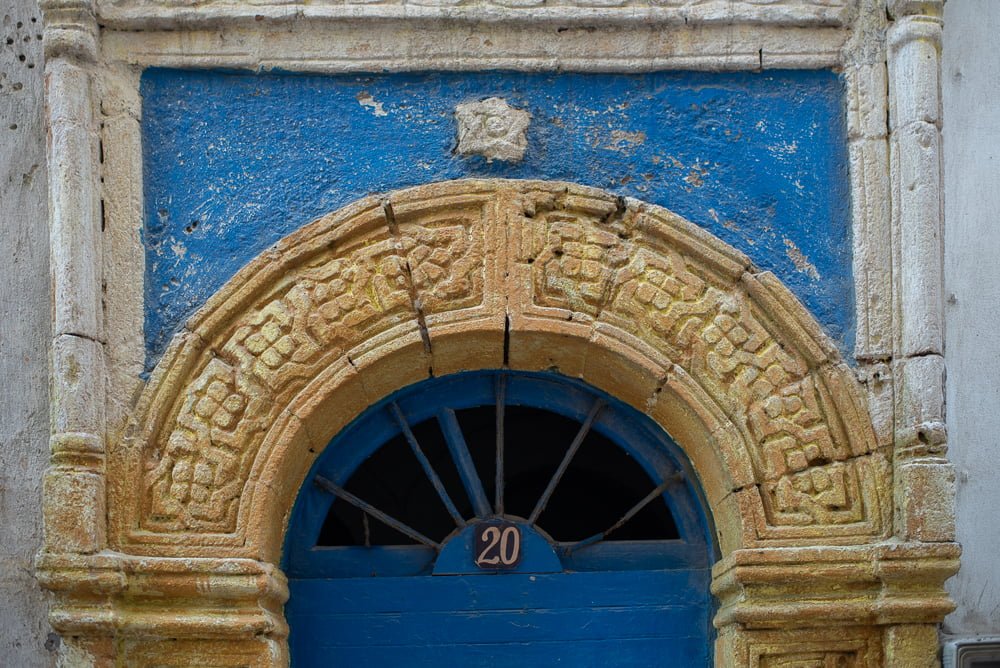
“Jewish minorities ……..should be viewed first and foremost as societies riven by conflict….beset with social divisions and contempt…..all the more so that social welfare could draw forth condescension. There was not therefore a single Oriental Jewish memory, but rather multiple memories, often fragmented around class divisions. The most affluent of Moroccan Jews maintained an almost idyllic recollection of the Judo-Arabic past, maintaining the illusion of inter-ethnic brotherhood that made it extremely hard for them to grasp the abruptness of the collapse. Within the protective orbit of the Cherifian palace, Jewish-Muslim solidarity was undeniable, and well after independence relations remained very close between the jewish and Muslim bourgeoisie, while conversely the gap was considerable between this wealthy minority and the working classes.”
‘ Jews in Arab Countries: The Great Uprooting ‘ by Georges Bensoussan
” Within the mellah, a ‘rather powerful oligarchy arose which the highest ( Muslim ) authority conspicuously favoured and this oligarchy – whether through fear or through gratitude – always connived with the administration in order to stifle the voices and pleas of the people.’ Yet externally these jews were exposed to the same vexing measures imposed on the rank and file of the community. Exposed to ‘ the antipathy of the populace, positioned between the fear of the Arabs and the thinly disguised hatred of their co-religionists, the Guebirim ( notables ) of the mellah strike me as more to be pitied than envied. Their lives are split between prudence and remorse, so much so that they have little ocassion to enjoy their wealth.’
From Larache, in 1904, the headmistress of a girls school wrote of ‘ the hateful thinking of the parents…..in the beginning rich parents would write to me, imploring me not to sit their girls next to students from the fondak ( housing for the poor ). Such ghastly prejudice. Since then I have been waging incessant war against that kind of caste thinking.’ “.
‘ Jews in Arab Countries: The Great Uprooting ‘ by Georges Bensoussan
” The Mahgreb remained the core of Jewish demography in Arab lands. On the eves of their respective attainments of independence, censuses showed 300,000 Jews in Morocco, 160,000 in Algeria, 120,000 in Tunisia and 40,000 in Libya. By 1947 these four countries already contained over 500,000 Jews, more than half the population in Middle-Eastern Muslim lands ( if one includes Iran and Turkey ) and more than two thirds if one just counts the Arab world. Morocco alone contained more than half the Jews of the Mahgreb, and one in four Jews of the whole Muslim-Arab world……..After 1945, in the space of a single generation nearly all the Jews in the Arab world would emigrate. It took only 40 years for Moroccan Jewry to fall from 300,000 people to just a few thousand……Today there remains only one community in Arab lands – that of Morocco, but as an isolated outlier, with fewer than 3000 by 2008.”
‘ Jews in Arab Countries: The Great Uprooting ‘ by Georges Bensoussan
UNESCO State of Conservation Report : Medina of Essaouira 2008
“b) Absence of a rehabilitation policy for the Mellah Quarter (open air garbage dump, sewage runoff on the outer walls of houses, continuous collapse of the buildings);
The mission noted that the overall state of conservation of the Medina of Essaouira was fairly good and had improved in recent years, in particular due to the recent clean-up and demolition of ruinous structures in the Mellah, which had constituted health and safety hazards. The mission was able to draw comparisons with an earlier visit (1998) where formerly a totally ruined and slum-type of neighbourhood existed against the Atlantic wall, the area was now clean and full of tourists following the trail through the historic quarters of Essaouira. Artisanal workshops, new hotels and restaurants were bringing investment, trade and activity to this part of town. Other areas in this district were earmarked for demolition, although the mission was re-assured that only those structures beyond repair would be involved and that the best and most valuable structures together with the traditional street-plan of the Mellah would be maintained. The mission stressed the need for a proper balance regarding investment in new hotels and restaurants and the traditional residential function, as well as for documentation of those structures and parts of the Mellah earmarked for demolition.
The mission was of the opinion that the municipality had entered into a very challenging process that would require vigilance and constant monitoring. The section of the city now demolished requires careful planning to introduce high-quality, contemporary architectural design interventions, which at the same time preserve memory and spirit of place. There is a need for a delicate balance between old and new to ensure designs both sensitive to the cultural-historic character of the place, as well as a creative and imaginative continuation of Moroccan architectural culture”.
Taken from UNESCO State of Conservation Report : Medina of Essaouira (formerly Mogador) 2008
https://whc.unesco.org/en/soc/1169
Despite the above UNESCO Report from 2008 little seems to have changed with the Mellah over the intervening 11 years. The above photographs were taken in June 2019. The final photograph is of a temporary dwelling established in the Mellah at Essaouira. This houses 9 former non-Jewish occupants of the Mellah forced to leave their accommodation and are now homeless. The occupants include an 8 year old child and an older Senegalese woman with considerable health needs. The dwelling has no running water, no sanitation and extremely limited cooking facilities ie gas burners, which are themselves a high safety risk. The dwelling is crudely divided into 3 separate living quarters. The written signs are in Arabic, French and English and provide graphic explanations of their predicament. The English sign proclaims :
‘ We are residents of neighbourhood el Mellah. We are threatened with collapse. Our houses were listed with the beneficiaries but we were excluded without any reason. We demand our right to decent housing as stated in the Moroccan constitution in the program of rehousing’
